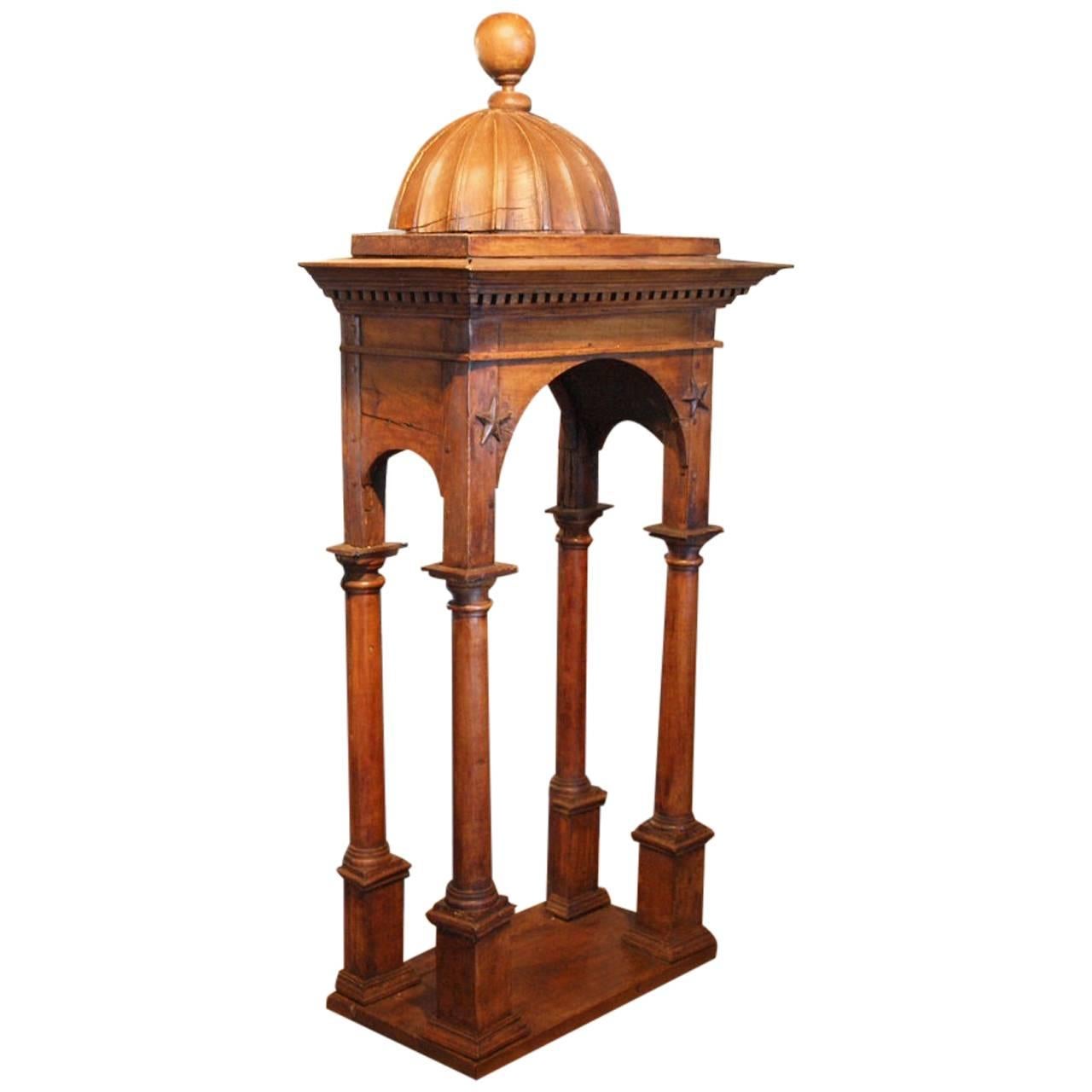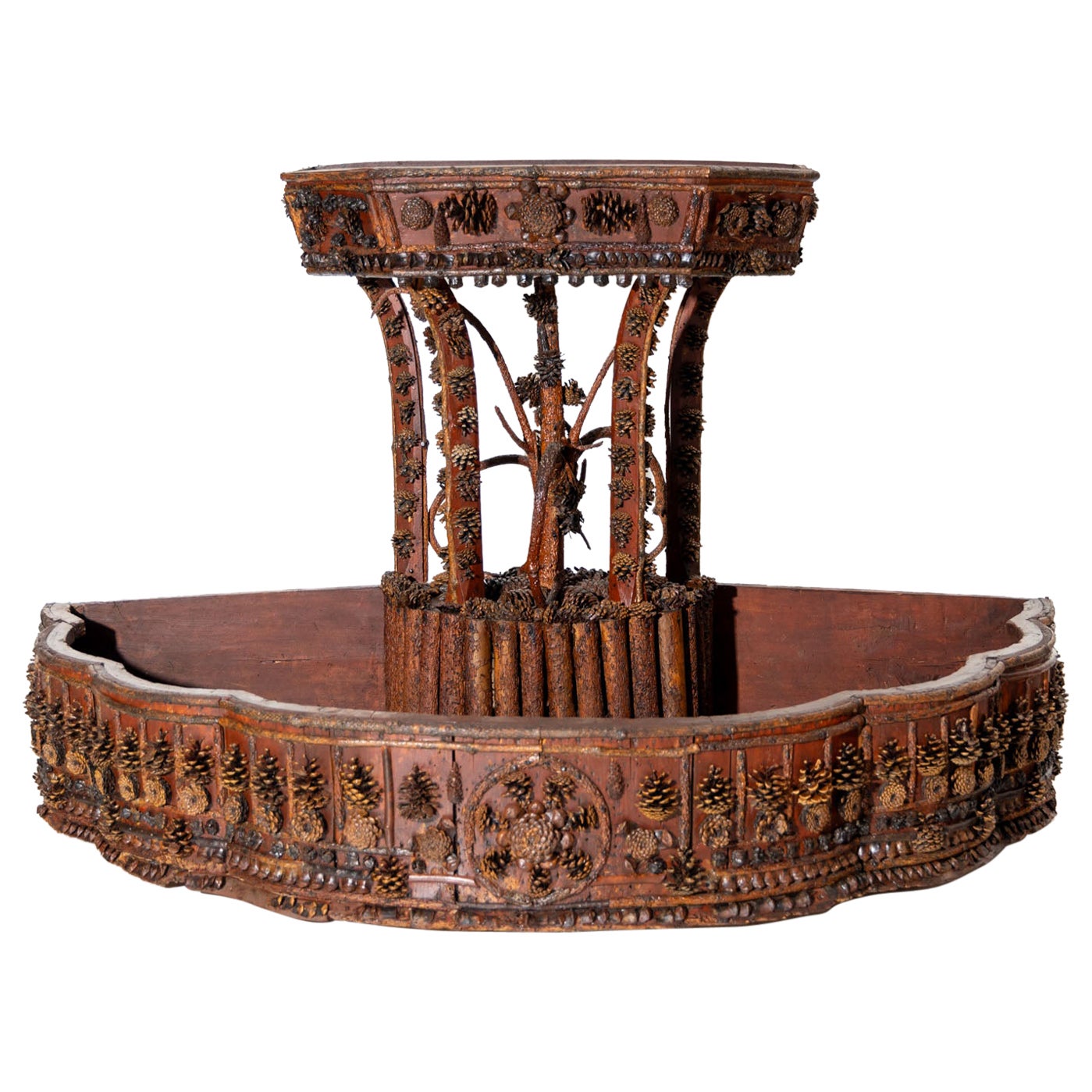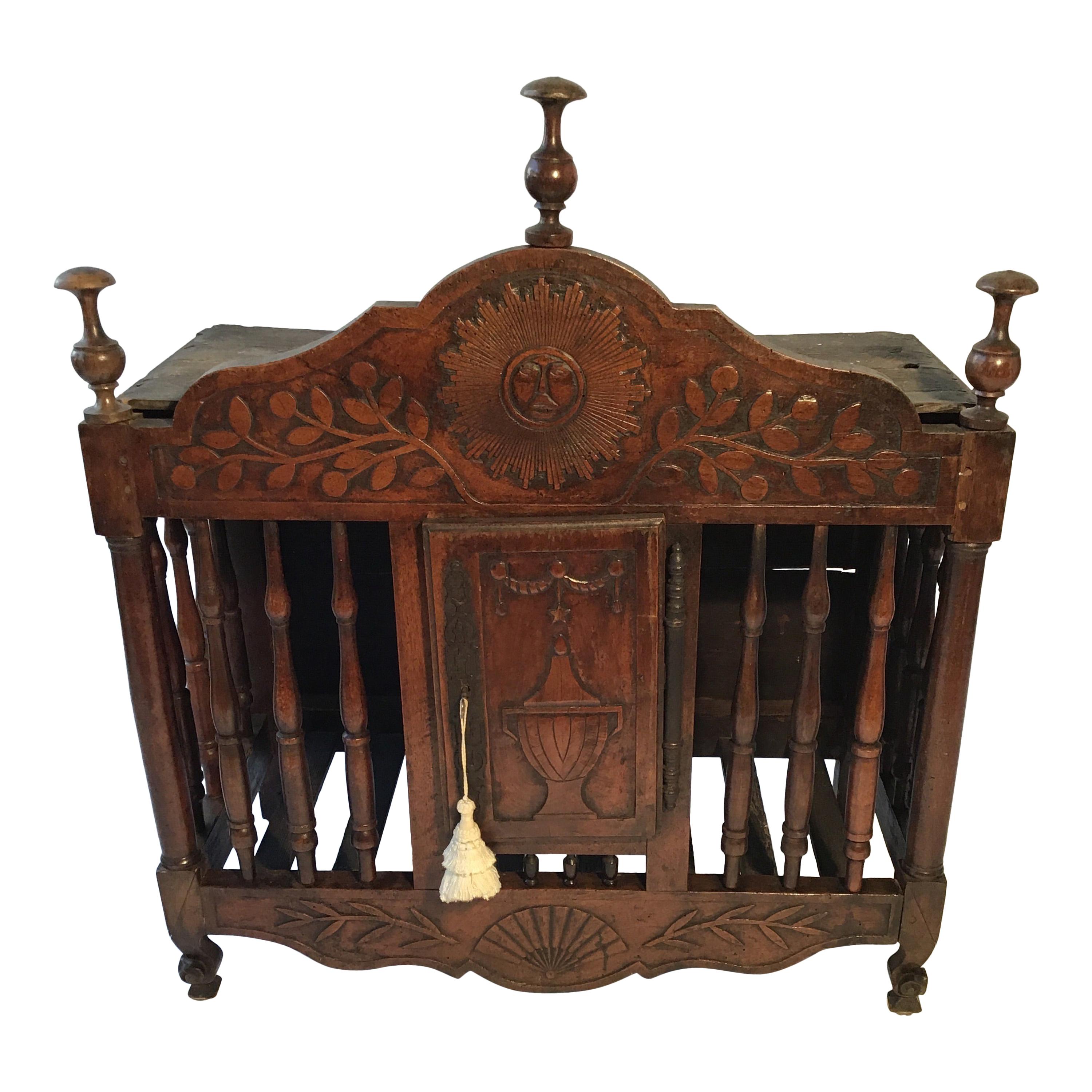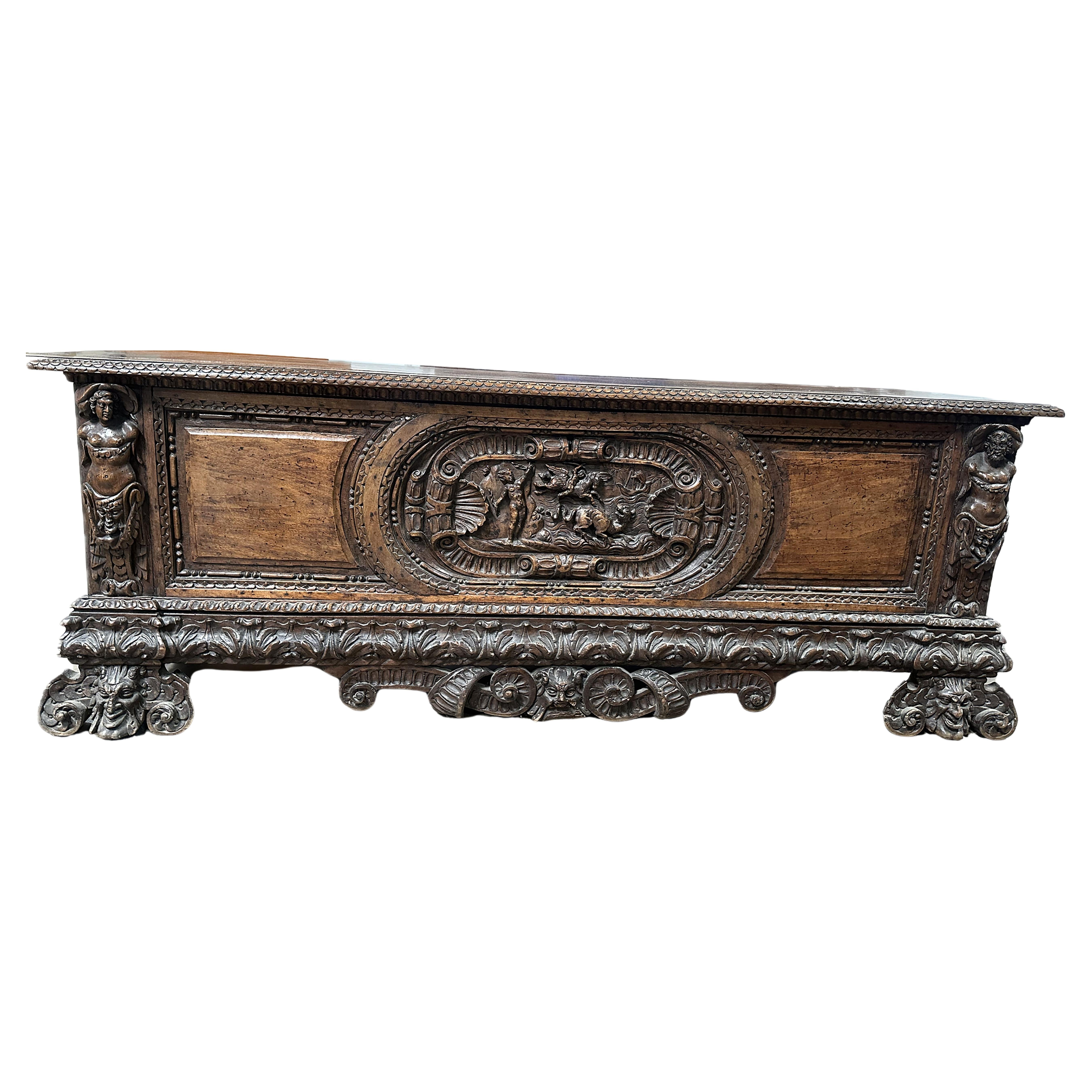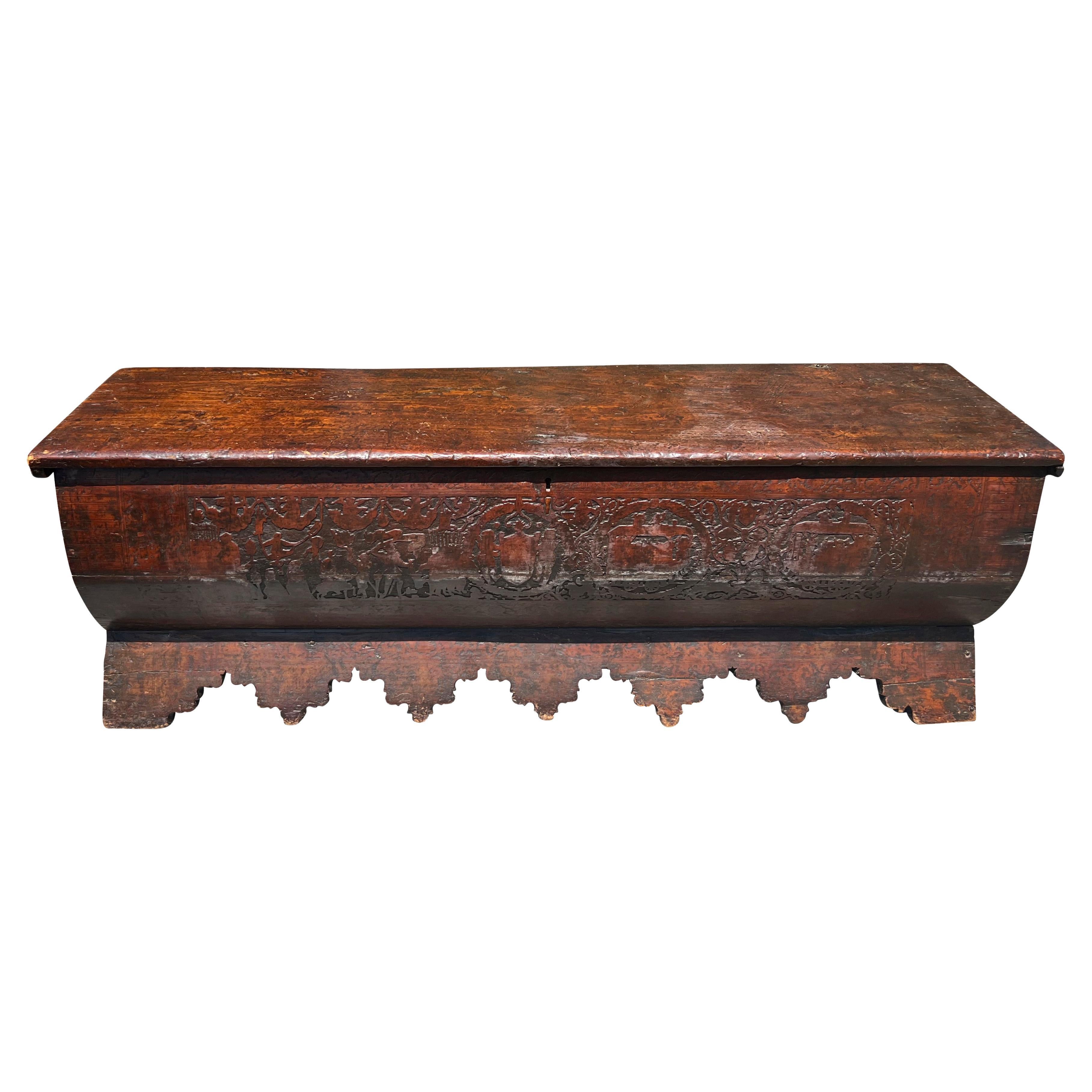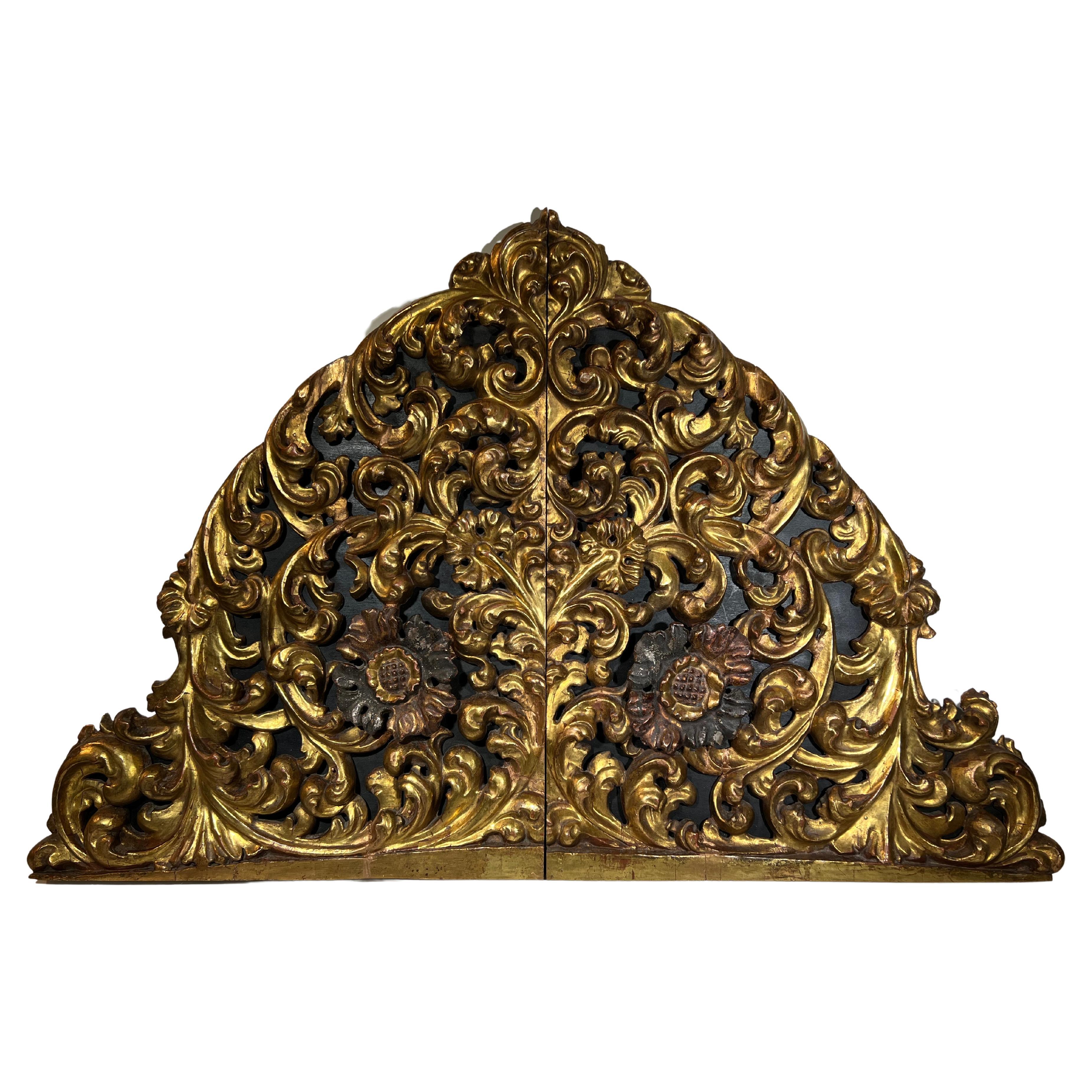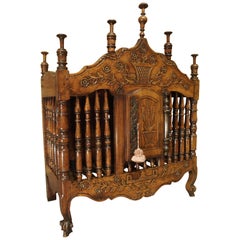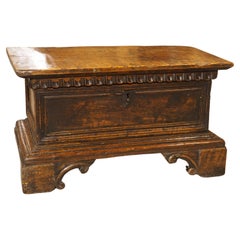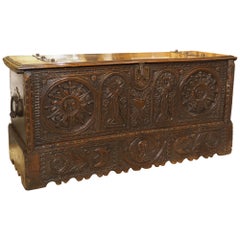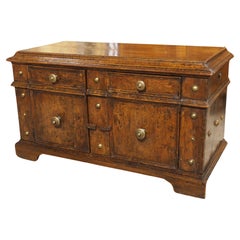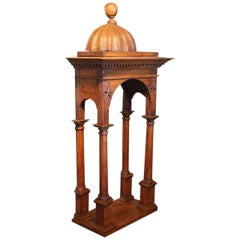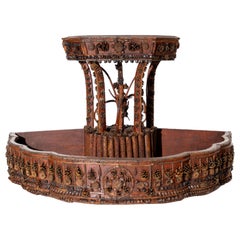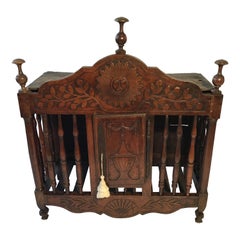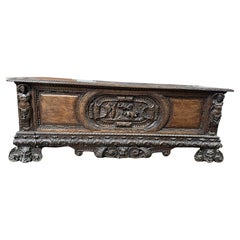Items Similar to 18th Century Italian Walnut Wood Pulpit Canopy
Want more images or videos?
Request additional images or videos from the seller
1 of 16
18th Century Italian Walnut Wood Pulpit Canopy
$3,400
£2,582.38
€2,983.51
CA$4,765.22
A$5,333.18
CHF 2,783.51
MX$65,037.31
NOK 35,625.14
SEK 33,723.76
DKK 22,265.51
Shipping
Retrieving quote...The 1stDibs Promise:
Authenticity Guarantee,
Money-Back Guarantee,
24-Hour Cancellation
About the Item
This large and attractive architectural piece is known as a pulpit canopy. Before the advent of microphones and speakers, orators would often address assemblies from elevated platforms known as “wine glass pulpits”. These podiums featured domed roofs called abat-voix, sometimes known as sounding boards, that would project sound outwards. Our walnut wood pulpit canopy is a fine example of such a device.
Hand-carved and hand-painted in Italy in the 1700’s, our abat-voix is roughly octagonal in shape. Each of the sides have edges with luxuriously thick step molding, alternating between stained and gilded wood. Each of the corner cornices are adorned with gilded flower carvings, although some are missing. The interior of the canopy features a gilded open sun with sinuous rays emanating all around. Each of the sides are adorned with foliate margents surrounded by scrolls, again with some losses. All the edges are bordered with a thin layer of gilding.
Although our fascinating 18th century Italian walnut pulpit canopy was designed for a church pulpit, a more practical use would be to use as a bed crown. The top side has two iron hooks for easy installation on the ceiling, and in the center of the sun is an iron hook which could be used to hold fabric.
- Dimensions:Height: 43.75 in (111.13 cm)Width: 55.25 in (140.34 cm)Depth: 9.5 in (24.13 cm)
- Materials and Techniques:
- Place of Origin:
- Period:
- Date of Manufacture:1700s
- Condition:Wear consistent with age and use. Minor losses. Good overall condition with wear commensurate to age and use; age separations and traces of old wood worm. Loss of motif and paint in some sections.
- Seller Location:Dallas, TX
- Reference Number:Seller: 1021-971stDibs: LU906325872452
About the Seller
5.0
Vetted Professional Seller
Every seller passes strict standards for authenticity and reliability
Established in 1983
1stDibs seller since 2011
848 sales on 1stDibs
Typical response time: <1 hour
- ShippingRetrieving quote...Shipping from: Dallas, TX
- Return Policy
Authenticity Guarantee
In the unlikely event there’s an issue with an item’s authenticity, contact us within 1 year for a full refund. DetailsMoney-Back Guarantee
If your item is not as described, is damaged in transit, or does not arrive, contact us within 7 days for a full refund. Details24-Hour Cancellation
You have a 24-hour grace period in which to reconsider your purchase, with no questions asked.Vetted Professional Sellers
Our world-class sellers must adhere to strict standards for service and quality, maintaining the integrity of our listings.Price-Match Guarantee
If you find that a seller listed the same item for a lower price elsewhere, we’ll match it.Trusted Global Delivery
Our best-in-class carrier network provides specialized shipping options worldwide, including custom delivery.More From This Seller
View All18th Century Carved Walnut Wood Panetiere from Provence, France
Located in Dallas, TX
From Provence, France, this beautiful walnut panetiere was hand-carved in the 1700’s. Panetieres were usually hung on walls and functioned as a decorative way keep bread safe...
Category
Antique 18th Century French Louis XV Cabinets
Materials
Metal
Small 17th Century Italian Carved Walnut Wood Cassone
Located in Dallas, TX
At 13 ½ inches tall and 24 inches wide, this small Italian wood cassone makes an intriguing and versatile storage piece. Hand-carved in walnut during the 1600s, the charming chest ha...
Category
Antique 17th Century Italian Trunks and Luggage
Materials
Wood, Walnut
Large and Richly Carved 17th Century Walnut and Oak Trunk from Spain
Located in Dallas, TX
A beautiful and robust Spanish trunk, the carvings on the front façade are large and vibrant, accented by a deep brown patina. The trunk was hand-carved in the 1600s by a master craftsman, using both oak and walnut woods. Large dovetail joineries, visible on the sides, add character to the trunk, without taking away from the magnificent carvings.
Two large, pierced iron straps support the massive trunk lid, which is embellished with several thin moldings. Both sides have an ovate handle affixed by a pierced floral mount, above an arbalete apron. The sinuosity continues on the front apron, but in more dramatic fashion, with a series of counter curves. Above the apron is a raised area (also seen on the sides) adorned with a winged angel mascaron inside of a shaped console, flanked by a large rosette atop a vine that is surrounded by a foliate border. A similar foliate carving can be seen on the recessed section of the façade, encircling another well-carved cartouche. The upper scene consists of a heart surmounting flowering leaves (beneath a shaped escutcheon), flanked by a pair of niches filled with sunbursts over flowering vines, which are in turn flanked by larger sunbursts personified with a mascaron center. All four sunbursts are incorporated with a cross, which, when depicted with the heart, symbolizes “love for all mankind”.
Our richly carved Spanish trunk...
Category
Antique 17th Century Spanish Blanket Chests
Materials
Metal, Iron
Rare Small Scale Walnut and Brass Credenzino from Bologna Italy, Circa 1550
Located in Dallas, TX
Dating to the Renaissance period (circa 1550), this diminutive credenza, known as a credenzino, is quite a rare find. At only 22 ½ inches tall and 40 inches wide, the beautiful stora...
Category
Antique 16th Century Italian Credenzas
Materials
Metal, Brass
Antique French Walnut Trunk depicting Winter and Summer, 17th C and Later
Located in Dallas, TX
More information coming soon…
The rich carvings of this French walnut trunk depict allegories for winter (Hibernus) and summer (Æstas). Carved figures accompanying each season are ...
Category
Antique 17th Century French Blanket Chests
Materials
Metal, Iron
Antique Italian Renaissance Library Table in Carved Walnut, 17th C. and Later
Located in Dallas, TX
Measuring over 7.5 feet long, this handsome Italian library table could function as a console or large desk. Originally hand-carved from walnut, the table has some elements that are ...
Category
Antique 17th Century Italian Renaissance Desks and Writing Tables
Materials
Metal, Iron
You May Also Like
18th Century French Niche - Tabernacle in Walnut
Located in Round Top, TX
A wonderful 18th century French niche - tabernacle beautifully constructed from walnut. Ideal for the display of statues or santos.
Category
Antique 18th Century French Pedestals and Columns
Materials
Walnut
Large wooden Etagère, Italy 19th century
Located in Greding, DE
Large two-tier etagère made of wood with integrated pine cones as decorative elements. The etagere has a large lower basin with a curved edge and a smaller angular basin, which is su...
Category
Antique 19th Century Italian Planters and Jardinieres
Materials
Wood
18th Century French Provençal Louis XV Walnut Panetiere
Located in Tarrytown, NY
This 18th century hand carved walnut panetiere was created in the finest detail, showing off it’s beautiful face of the sun, and urn door. Originally used to store French Baguettes or long loaves of bread in French manor homes, panetierres were meant to sit on a dough chest...
Category
Antique 1780s Cupboards
Materials
Wood
Antique Italian Walnut Cassone
Located in Dallas, TX
A handsome wide Italian walnut Cassone. Intricately carved gothic style narrative carvings on the front along the side, bottom, and center. Rich patinated burnt umber color wood fini...
Category
Antique 17th Century Italian Blanket Chests
Materials
Walnut
Italian Renaissance Walnut Cassone
Located in Essex, MA
With flat hinged top opening to a open compartment. The curved case carved with a crest and figures and various designs. Bracket feet with trefoil form apro...
Category
Antique Early 1600s Italian Renaissance Blanket Chests
Materials
Walnut
Italian Early 19th Century “Boisserie” In Gilded Wood
Located in Round Top, TX
A very impressive panel constructed from Northern Italian early 19th century boisserie fragments - now mounted on a wooden panel. Wonderful as a headboard.
Category
Antique Early 19th Century Italian Architectural Elements
Materials
Giltwood
More Ways To Browse
Antique Canopy
Wood Cornice
Antique Italian Wood Carvings
Antique Carved Wood Molding
Italian Cornice
Italian Gilt Crown
Crown Canopy
18Th Century Antique Beds
Italian Gilt Walnut
Wood Carved Ceiling
Gilt Cornice
Hand Carved Wood Hooks
Wood Carving Bed
Antique Wood Ceiling
Carved Wood Italian Beds
Antique Walnut Carved Bed
Iron Roof
18th Century Canopy
